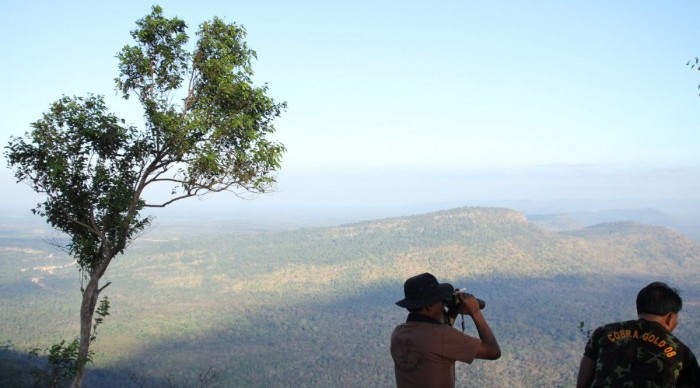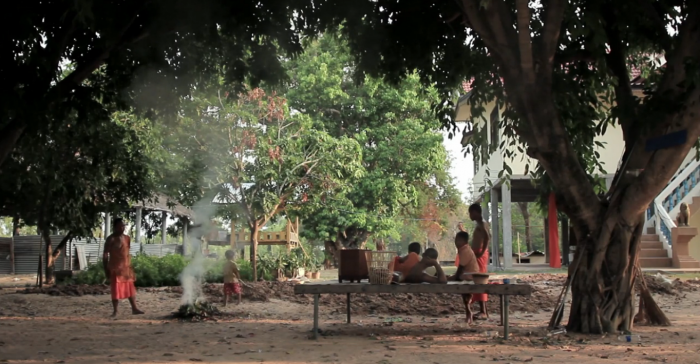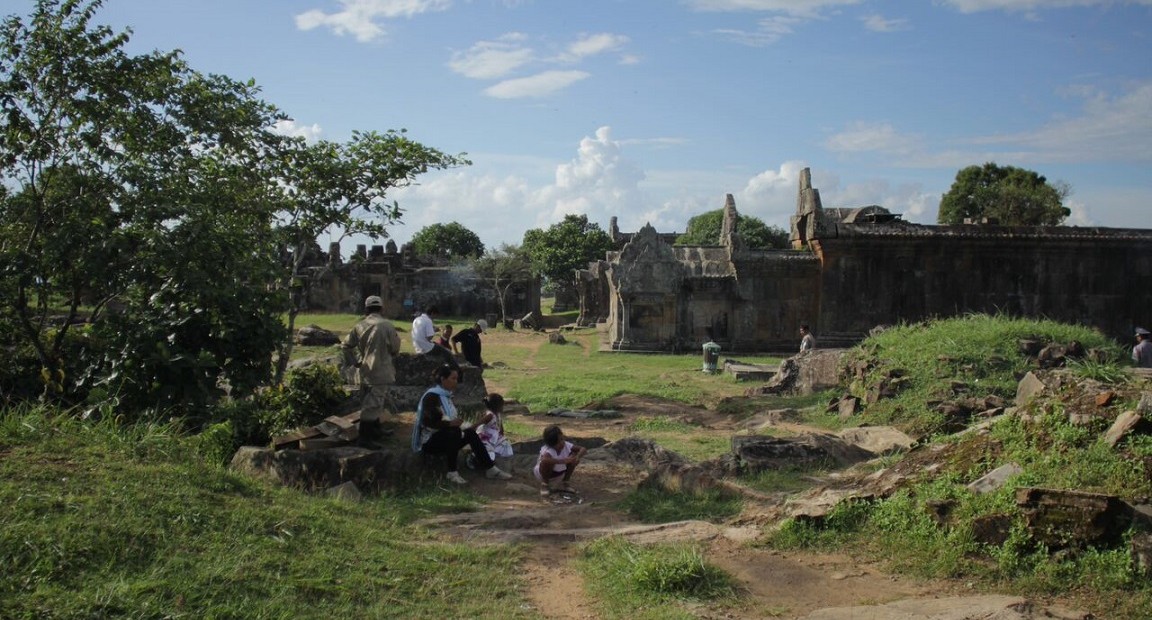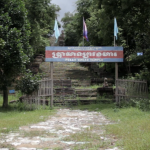By Maya Caspari
Directed by Nontawat Numbenchapol
Banned by the Thai government shortly after its release in 2013, Thai director Nontawat Numbenchapol’s documentary Boundary sheds light on the conflict that has recently marked the Thai-Cambodian border, leaving thousands displaced.
Despite the broad scope of its politically charged subject matter, the film’s focus is on the everyday lives of individuals affected by the violence. Opening with shots of the dashboard of a moving car – a recurring theme throughout – it asks us to view it not as a neat political critique, but rather as an unfolding aesthetic journey; one on which we accompany Numbenchapol as he encounters different stories, while also telling his own. There is no conventional voiceover narration here; contextual information and the director’s commentary appears occasionally – and sometimes somewhat distractingly – as writing on screen. Without offering explicit judgement or detailed description, Numbenchapol lets the voices of those he speaks to form the main body of the film.
In its early scenes, the documentary takes us into the midst of the 2010 New Year celebrations in Ratchaprasong Intersection, Thailand. People count down, upbeat music plays. Yet, we quickly realise, the festive front hides a more complex history. This was the site at which over 100 “˜Red Shirt’ protestors were killed on the government’s orders just a few months before. We are not directly shown any violence, yet we know it was there. The intense, celebratory scene – screaming crowds, the sounds of fireworks – thus suddenly becomes jarring and strange, emphasising the horror of the recent past in its very festivity.

The sense of a present marked by the conflicts of the recent past continues as the film moves from these Bangkok New Year celebrations to the deceptively placid landscape of Thailand’s border villages – in fact the site of violent disputes between Thailand and Cambodia. Focusing initially on Aod, a young soldier who was involved in “˜dispersing’ the Red Shirt protestors, the film shows footage of the surrounding area – monks bathing in a river, the fervour of young army recruits – that loosely relates to his story.
The film’s strength lies in the sense of intimacy it creates with Aod and the other villagers who live nearby. Through capturing the details of domestic routines – eating dinner, sleeping, sitting outside in the evening – Numbenchapol evokes the rhythms of life in the areas he visits. Long shots of fields, a fishing trip and slow-motion footage of faces blinking into the camera engender a sense of quietness that is seemingly at odds with villagers’ descriptions of recent violence. Through this contrast, we not only gain a sense of locals’ relative indifference to government politics as they attempt to go on with their lives, but also more acutely register the disruptiveness of past conflict and its painful human impact. In one particularly moving scene, a woman describes losing her home in bombings. “We had everything but now we have nothing,” she says.
As well as his obvious familiarity with his subjects, Numbenchapol also plays with distancing techniques, drawing attention to the ways in which he too is an observer, not belonging to any single group that he visits. At one point, villagers throw water at the passing car, and we watch them as water rolls down the windows. The sensation is one of separation; we are looking out at them, not fully part of their world even as we move through it.

In this sense, the film avoids offering a one-dimensional narrative on the conflict – painting a nuanced picture of the situation through offering space to the voices of those not often heard, without fully committing to the story of any one individual or group. Yet, while this approach is politically engaging, the film at times feels slow moving; its collage-like aesthetic approach (at one point it even briefly features a musical soundtrack) can seem unfocused. Some fascinating comments emerge from those interviewed, yet the sheer volume of conversations and images it tries to contain risk burying some of its most interesting points.
To watch Boundary is, in this sense, to join Numbenchapol on a trip that is at times frustrating, yet nonetheless fascinating. Despite its moments of uncertainty, it ultimately rewards with the engaging stories of those he meets along the way.
Watch Boundary on FilmDoo.com.
FilmDoo Also Recommends:








